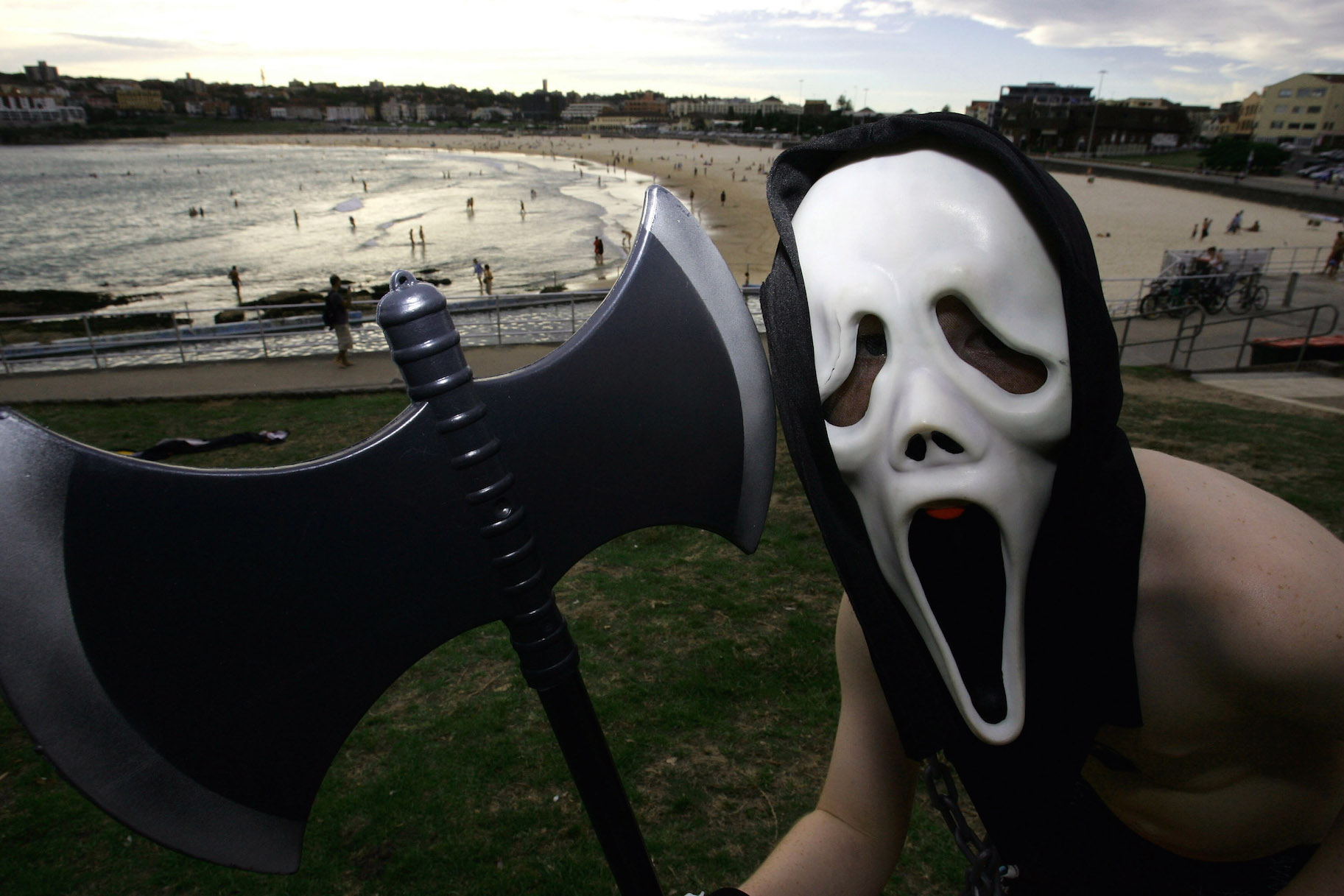Create a free profile to get unlimited access to exclusive videos, breaking news, sweepstakes, and more!
How Much Of The Horror Classic 'Scream' Is Based On The Real Crimes Of The Gainesville Ripper?
The postmodern horror classic "Scream" isn't often thought of as a true crime story. How closely is the film based on the real-life murders of The Gainesville Ripper, Danny Harold Rolling?

Wes Craven's postmodern horror masterpiece "Scream" has heavily influenced screen culture in the two decades since it debuted. Subverting the tropes of the slasher sub-genre, the film's deconstructionist take on the pop imaginary has perhaps changed the course of contemporary cinema. Because of the surprisingly high-brow premise, in which the characters winkingly discuss horror cliches while being killed off one-by-one, not much attention is paid to the real-life murders on which the bloody genre classic is based. How faithful is "Scream" to the story of The Gainesville Ripper?
Danny Harold Rolling terrorized the college town of Gainesville, Florida in the summer of 1990, six years before "Scream" debuted in theaters. Rolling took the lives of five students and would later confess to raping several of his victims, attempting to murder his own father, and an additional triple homicide in Shreveport, Louisiana, according to Gainesville.com. He had broken into several local homes and eviscerated the teens with knives after binding them with tape.
Rolling's crimes were idiosyncratic in that he often posed the corpses of his victims with mirrors. The shock of his killings led to several students dropping out of nearby schools at the time and widespread panic in the area.
“We slept with steak knives last night,” one frightened junior at the University of Florida told the Associated Press at the time.
One of the key pieces of evidence leading to his capture was the discovery of several recorded country songs in which he alluded to the crimes. While in jail, his songs, poems, and drawings were traded in black markets as murderabilia.
Following the beats of a horror movie, Rolling was not the original suspect in the case. At first, police hypothesized that it was 18-year-old Edward Lee Humphrey, a physically scarred, mentally ill student that had recently been arrested for abusing his grandmother. Further investigation would lead to Rolling's apprehension, meaning that the disfigured Humphrey was just a dramatic red herring in the case — "Scream" has a similar plot development when police begin to suspect the protagonist's father of a local killing.
Rolling's penchant for horror films, specifically "The Exorcist III," which he watched before the murders, was reflected in the self-awareness of the killer(s) of "Scream" and had been noted at the time of his trial. In that film, a criminal's alternate personality named Gemini is responsible for raping and mutilating several victims. Gemini seemed to have developed into a psychological entity for Rolling, as well.
″Gemini is a part of Mr. Rolling’s persona,″ said Dr. Robert Sadoff, a psychiatrist who testified during Rolling's court case at the time, according to The Associated Press. ″Mr. Rolling deals in magic, fantasy and mysticism ... [Rolling thought] someone [was] communicating to him through the movie.″
It may have been this hyperreal twist in Rolling's case that led to the avant-garde ambitions of "Scream," which problematizes the fictionality of horror cinema.
Kevin Williamson, the screenwriter for "Scream," has since discussed the ways Rolling's spree had influenced his script about a knife-wielding home invader who scared students. He first came across the Rolling's story while watching Turning Point, an ABC news program, according to News.com.au.
A Complex investigation into the similarities between "Scream" and the real-life story on which it is based noted that the idea for "Scream" crystalized as Williamson imagined a knife-weilding killer was waiting for him outside of the home where he was staying. Williamson sold his screenplay based on these musings to the Weinstein Brothers for $400,000.
Although the setting of "Scream" is the fictional town of Woodsboro, California, the way that the crimes of Rolling paralyzed locals is reflected in the jokey paranoia of the film. But unlike in real life, the killer of "Scream" is revealed to be two people, Billy Loomis and Stu Macher.
Rolling would eventually be put to death by lethal injection in 2006, meaning that unlike "Scream," his story won't be getting a sequel. But his crimes live on as the "Scream" franchise continues to grow, with an MTV series based on the original film set for a third season.
[Photo: "Scream" Mask by Sergio Dionisio / Getty Images]














